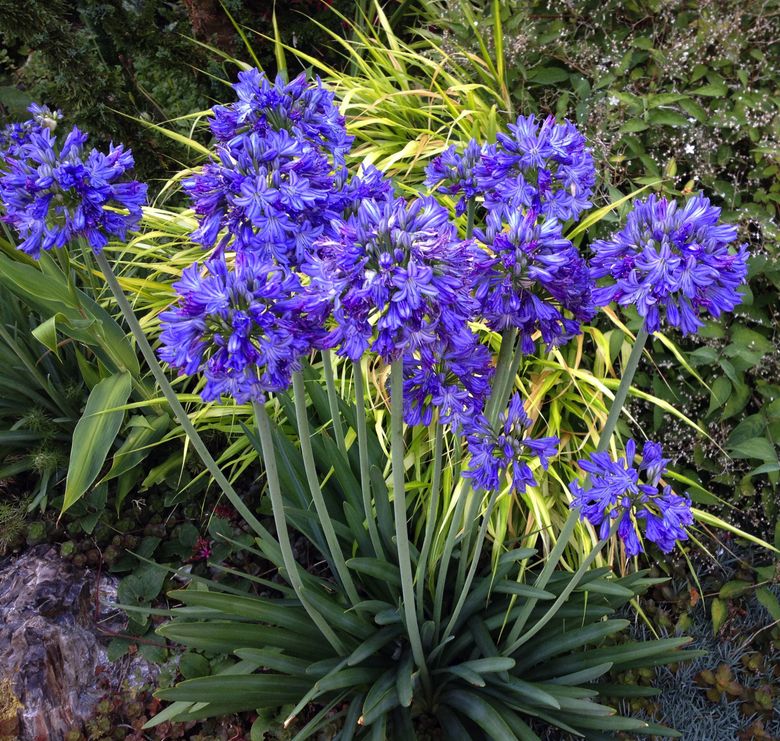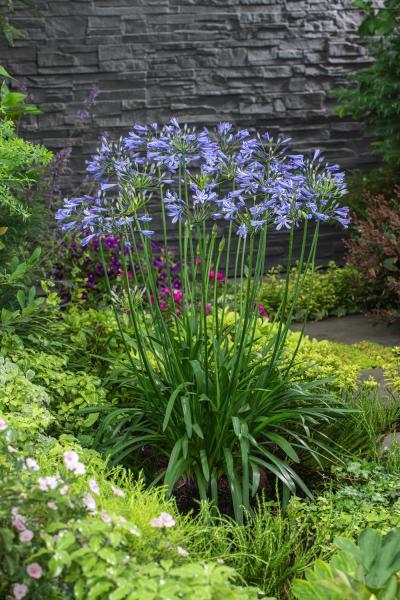Usual Agapanthus Issues and How to Solve Them
Usual Agapanthus Issues and How to Solve Them
Blog Article
Releasing the Secret to Successful Agapanthus Cultivation: Idea for a Flourishing Garden
In the realm of horticulture, growing agapanthus efficiently requires a calculated technique that incorporates various aspects of plant treatment. By recognizing the nuances of agapanthus cultivation, one can produce an atmosphere where these plants grow and grow abundantly.
Planting Agapanthus: Finest Practices
When growing Agapanthus, appropriate dirt prep work is essential for guaranteeing successful growth and advancement of these attractive blossoms. Agapanthus, commonly called Lily of the Nile or African lily, flourishes in well-draining soil with a slightly acidic to neutral pH level - Agapanthus. Prior to growing, it is important to amend heavy clay soils with organic matter such as compost or peat moss to improve drainage and supply vital nutrients for the plants
To grow Agapanthus, select a place that gets complete sunshine to partial color, as this will certainly advertise healthy and balanced development and bountiful blooming. Dig an opening two times the diameter of the plant's root ball and place the Agapanthus at the same deepness it was formerly expanding. Carefully backfill the hole with soil, pushing down strongly to eliminate any type of air pockets around the roots.
Water the recently planted Agapanthus thoroughly and remain to maintain the soil evenly moist, especially throughout the plant's energetic growing season. Agapanthus. Using a well balanced plant food once a month can additionally support the plant's growth and blooming. By complying with these finest practices for growing Agapanthus, you can produce a sensational display of these captivating blossoms in your garden
Ideal Dirt Issues for Agapanthus
For optimum development and blooming success of Agapanthus plants, making sure the soil problems are suitable is critical. Agapanthus grows in well-draining soil with a slightly acidic to neutral pH level varying from 6.0 to 7.0. This type of dirt permits appropriate water drainage, preventing waterlogging which can bring about root rot. To improve soil water drainage, think about including raw material such as garden compost or peat moss when preparing the growing site. Moreover, Agapanthus favors dirt that is rich in nutrients, so including a well balanced fertilizer throughout the expanding season can advertise healthy and balanced development and lively blossoms.

Watering and Fertilizing Tips
To guarantee healthy growth and dynamic flowers, appropriate watering and feeding strategies are crucial for effective Agapanthus farming. Agapanthus plants profit from regular watering, particularly throughout the expanding season. It is recommended to water deeply once a week, ensuring the dirt is wet yet not saturated. During hot weather or in pots, more frequent watering might be essential to avoid the dirt from drying entirely.
When it pertains to fertilizing Agapanthus, a balanced plant food with equal parts nitrogen, phosphorus, and potassium can be used in the springtime to promote healthy development and blooming. Slow-release fertilizers are perfect for offering nutrients slowly over an extended duration. Prevent over-fertilizing, as this can result in excessive vegetation growth at the expense of flowers.
Furthermore, incorporating raw material like compost right into the soil can improve nutrient levels and enhance dirt structure, assisting in the general health of the Agapanthus plants. By adhering to these watering and fertilizing ideas, gardeners can ensure their Agapanthus plants prosper and create stunning display screens of flowers.
Trimming and Deadheading Methods
Correct pruning and deadheading techniques play a critical function in maintaining the health and wellness and appearances of Agapanthus plants, enhancing the important practices of watering and feeding for effective cultivation. Pruning Agapanthus entails removing spent blossom heads, yellowing or dead leaves, and overall shaping of the plant to promote much better try this web-site development. Deadheading, the process of removing faded blossoms, not just enhances the plant's appearance yet likewise motivates additional growing.
When deadheading Agapanthus, it is advisable to clip off the blossom stem at the base making use of sharp, tidy shears. This process redirects the plant's power from seed production back into origin and vegetation growth, promoting a healthier and extra robust plant. Routine deadheading can expand the blooming period of Agapanthus and stop self-seeding, which can bring about overcrowding.
In regards to trimming, Agapanthus generally gain from a light trim after blooming to clean up the plant and encourage fresh growth. Cutting down the spent blossom stems and removing any broken or dead vegetation aids keep the plant's vitality and general appearance. Nevertheless, it is necessary to avoid cutting right into the crown of the plant, as this can damage its health.

Protecting Agapanthus From Pests and Diseases
Executing effective insect and illness administration methods is visit our website vital to guarding the wellness and vitality of Agapanthus plants in cultivation. Agapanthus are typically hardy plants, but they can still succumb various pests and conditions otherwise effectively cared for. One common pest that affects Agapanthus is the Agapanthus borer, a caterpillar that passages right into the plant, triggering damage to the leaves and blossoms. To stop infestations, regular examination of the plants is crucial. If borers are identified, they can be manually removed, or insecticidal soap can be utilized as a control action.
Along with parasites, Agapanthus are susceptible to conditions such as root rot and fungal fallen leave areas. These issues can usually be stopped by guaranteeing correct drain and staying clear of overwatering. If signs of disease appear, influenced components try this out of the plant must be promptly eliminated to protect against further spread. Fungicides may likewise be utilized as a treatment step, following the producer's directions very carefully. By remaining cautious and addressing insect and condition issues immediately, garden enthusiasts can aid their Agapanthus flourish and flourish.

Verdict
In verdict, successful cultivation of agapanthus needs proper growing methods, ideal dirt conditions, adequate watering and fertilizing, regular pruning and deadheading, and protection from pests and diseases. By adhering to these tricks and pointers, gardeners can make certain a flourishing yard loaded with lovely agapanthus flowers. Agapanthus. Remember to preserve regular care and interest to detail to advertise the wellness and durability of these sensational plants
When planting Agapanthus, correct soil prep work is essential for making sure successful growth and growth of these attractive blossoms.Water the recently planted Agapanthus extensively and proceed to maintain the dirt equally moist, specifically during the plant's active expanding season.For optimal development and flowering success of Agapanthus plants, making sure the dirt problems are suitable is vital. When planting or hair transplanting Agapanthus, guarantee the dirt is well-prepared to give the necessary foundation for the plants to establish themselves effectively. One usual bug that affects Agapanthus is the Agapanthus borer, a caterpillar that passages into the plant, creating damage to the fallen leaves and flowers.
Report this page